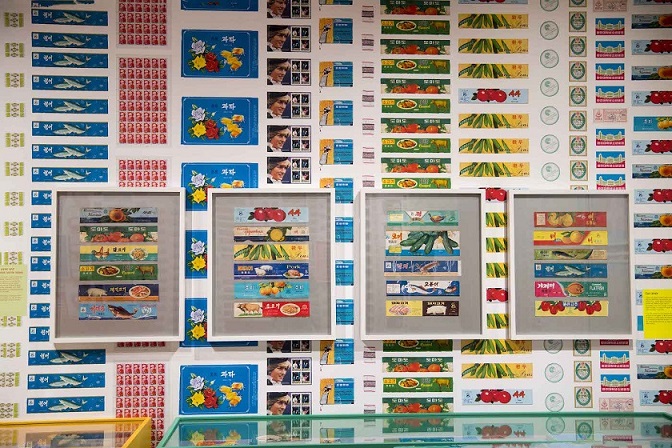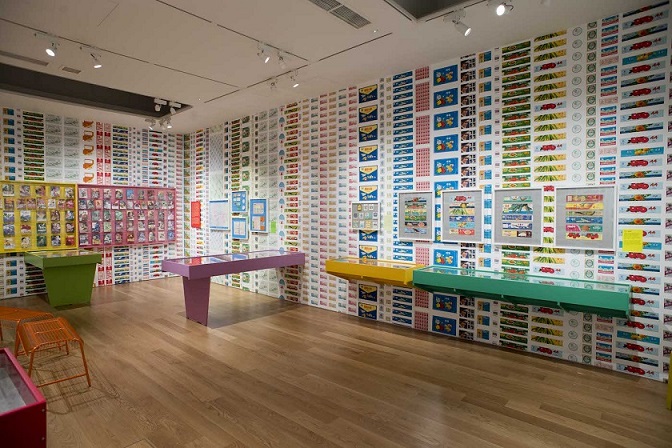These few rooms are just as cleverly and strikingly designed as the objects on display. The bright colors of the propaganda posters, which have stirring socialist messages like “Let’s take good care of the People’s assets!” pop against the vivid blue, yellow, and orange walls. One room has turned North Korean food packaging and other items into a wallpaper pattern, so that the walls themselves become part of the exhibit. And the captions and explanations are helpful without being obtrusive or, as is so often the case with exhibits of North Korean culture, well-meaning but condescending.
Hand-painted poster saying “More consumer goods for the people” (collection Nicholas Bonner, photograph by Justin Piperger)
One gallery label explains that the nation’s cultural isolation and use of recurring motifs have made for a distinctive aesthetic. This shines through especially in the posters ― the ones produced this decade are almost indistinguishable from those made in the 1970s. From the blaring text to the fresh-cheeked North Koreans in workplace settings, the centralization of standards and training practices have created a unified look.
It’s also fascinating to see so many examples of an advertising and popular culture that doesn’t depend on sex ― unlike the heavy reliance, in modern Western marketing images, on the erotic. The modest dress of the performers and characters pictured in these objects is notable. It’s also clearly part of a government-sanctioned effort to cultivate a socialist ideal of wholesomeness.
Made in North Korea at House of Illustration (image © Paul Grover)
It’s a sign of how little is known about North Korean art culture that all these ordinary objects are being displayed in a gallery setting. While it’s impossible for non-North Koreans to discuss the country without discussing politics, Made in North Korea makes for a welcome change from overheated political rhetoric that does little to illuminate the country’s everyday lives.
Made in North Korea at House of Illustration (image © Paul Grover)
Hand-painted poster saying “Everything for the full achievement of the 1979’s People’s economic plan” (collection of Nicholas Bonner, photograph by Justin Piperger)







